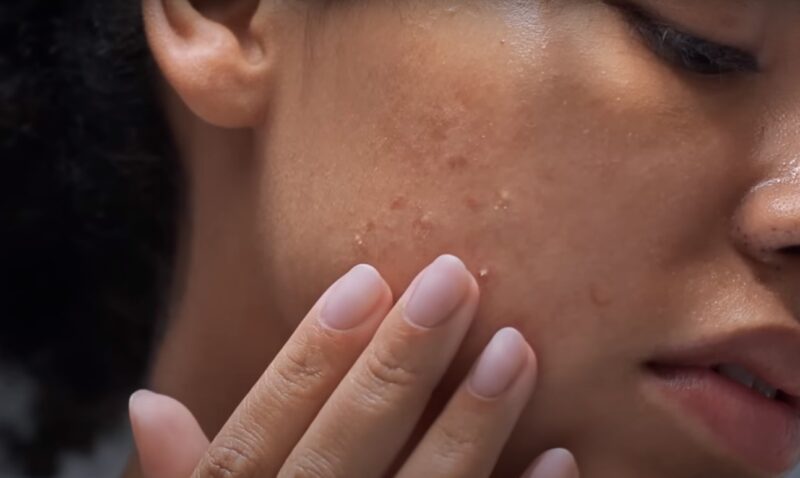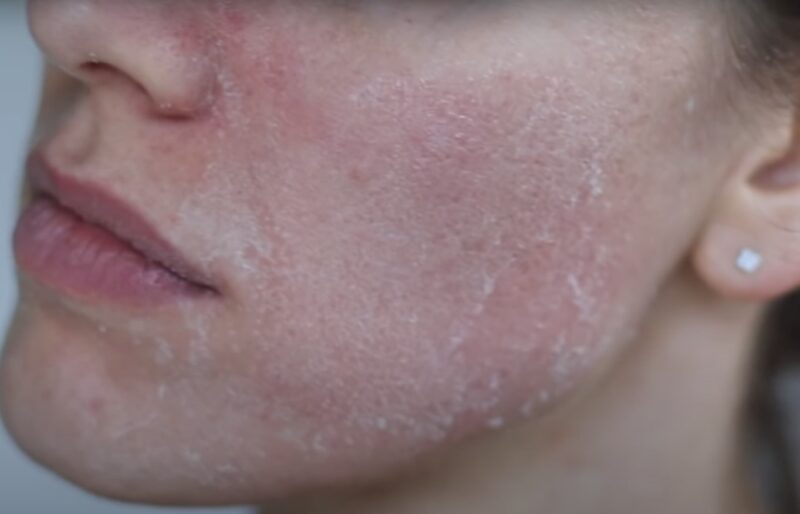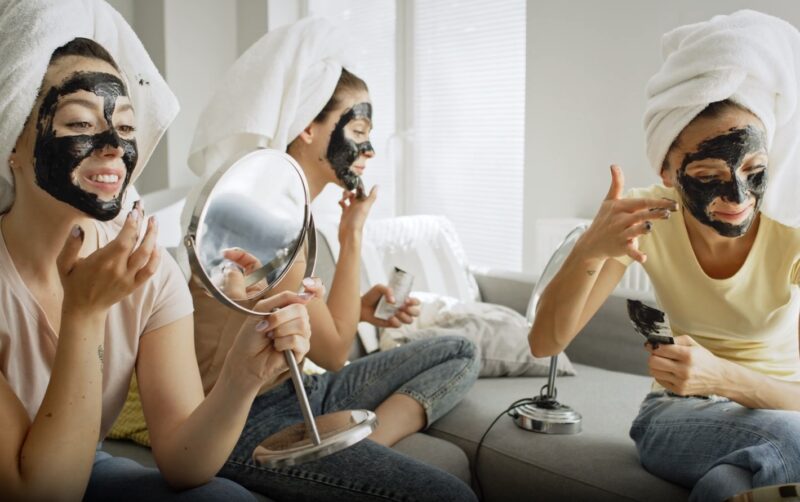Creating a skincare routine for teenagers is an essential step towards establishing lifelong habits for healthy and radiant skin. The teenage years bring about significant changes in the body, including the skin, due to fluctuations in hormones.
These changes often lead to common skin issues such as acne, oily skin, and the occasional dry patches. Building an effective skincare routine can help manage these problems and lay the foundation for good skin health.
Skin Types
The first step in building a skincare routine is understanding your skin type. Skin types are generally categorized as oily, dry, combination, and sensitive.
- Oily Skin: Characterized by excess oil on the face, often leading to shiny skin and larger pores. Oily skin is more prone to acne and breakouts.
- Dry Skin: Feels tight and may flake due to lack of moisture. Dry skin requires products that hydrate and moisturize.
- Combination Skin: Features both oily and dry areas on the face, typically with oiliness in the T-zone (forehead, nose, and chin) and dryness on the cheeks.
- Sensitive Skin: Reacts easily to certain ingredients or environmental factors, causing redness, itching, or irritation.
To assist in identifying your skin type, the following table outlines key characteristics and methods for determining whether you have oily, dry, combination, or sensitive skin.
This guide is designed to help you observe your skin’s natural tendencies and reactions, providing a foundation for selecting appropriate skincare products and routines.
| Skin Type | Characteristics | How to Determine |
|---|---|---|
| Oily | Excess oil on the face, shiny appearance, larger pores, prone to acne and breakouts. | Wash your face with a gentle cleanser and pat dry. After an hour, observe your skin. If it looks shiny and feels oily to the touch, especially on the forehead, nose, and chin, you likely have oily skin. |
| Dry | Tightness, flakiness, lack of moisture, may appear dull. | After cleansing, don’t apply any products. If your skin feels tight, rough, or shows signs of flaking after a short period, you probably have dry skin. |
| Combination | Oily in the T-zone (forehead, nose, chin) with dryness on the cheeks, mixed texture and appearance. | Observe your skin throughout the day. If you notice oiliness in the T-zone and dryness or normal skin on the cheeks, your skin type is likely combination. It’s common to need different care routines for different areas of your face. |
| Sensitive | Easily irritated by products or environmental factors, may experience redness, itching, burning, or dry patches. | Apply a mild product to a small area of your face and wait for any reaction. If your skin frequently reacts with redness, itching, or other forms of irritation to new products or certain ingredients, it indicates sensitive skin. Always patch test before trying new products widely on your face. |
The Importance of Simplicity
When building a skincare routine for teenagers, simplicity is key. A basic but effective routine is more sustainable and reduces the risk of overwhelming the skin with too many products.
The fundamental steps of a good teenage skincare routine include cleansing, moisturizing, and applying sunscreen. This simple approach helps maintain the skin’s natural balance and supports its health without causing irritation or exacerbating skin issues.
Choosing the Right Products

Selecting the right skincare products is essential for a successful routine. Look for products formulated for your skin type and concerns. For instance, oil-free and non-comedogenic products are best for oily and acne-prone skin as they won’t clog pores.
Hydrating ingredients like hyaluronic acid and glycerin are beneficial for dry skin, while fragrance-free and hypoallergenic products are suitable for sensitive skin.
For Oily and Acne-Prone Skin:
- Cleansers: Opt for a gentle, foaming cleanser that contains salicylic acid or benzoyl peroxide to help unclog pores and reduce breakouts. These ingredients help to control excess oil without overly drying the skin.
- Moisturizers: Look for lightweight, oil-free moisturizers that provide hydration without adding shine or clogging pores. Ingredients like niacinamide can help regulate oil production and improve skin texture.
- Treatment Products: Consider products with retinoids (for evening use) to promote cell turnover and prevent clogged pores. During the day, a spot treatment containing benzoyl peroxide or tea tree oil can target individual pimples.
For Dry Skin:
- Cleansers: Choose a hydrating cleanser that is cream-based and free from sulfates to clean without stripping the skin of its natural oils. Avoid foaming cleansers, which can further dry out the skin.
- Moisturizers: Invest in a richer, cream-based moisturizer that contains hyaluronic acid, glycerin, or ceramides. These ingredients help to lock in moisture and repair the skin barrier.
- Treatment Products: Products containing lactic acid or gentle retinoids can improve texture and hydration levels without irritating dry skin. Look for serums and night creams that focus on hydration and repair.
For Combination Skin:
- Cleansers: Use a gentle, balanced cleanser that can remove excess oil from the T-zone without drying out the cheeks. A gel-based cleanser can offer the right balance.
- Moisturizers: Consider using two different moisturizers for different areas of the face: a lightweight, oil-free moisturizer for the T-zone and a more hydrating formula for dry areas.
- Treatment Products: Incorporate a BHA (salicylic acid) exfoliant to control oil in the T-zone, while using a hydrating serum with hyaluronic acid on drier parts of the face.
For Sensitive Skin:
- Cleansers: Look for fragrance-free, sulfate-free cleansers with a creamy or milky consistency. These formulas are less likely to irritate sensitive skin.
- Moisturizers: Choose moisturizers labeled as “fragrance-free” and “hypoallergenic” with soothing ingredients like aloe vera, allantoin, or colloidal oatmeal.
- Treatment Products: Be cautious with active ingredients. Opt for calming serums that contain antioxidants like vitamin C (in its more stable and gentle forms, like magnesium ascorbyl phosphate) and ingredients that support skin barrier function, such as niacinamide.
Daily Skincare Steps (In Order)
1. Cleansing
Cleansing is the cornerstone of any skincare routine. It removes dirt, oil, and impurities from the skin’s surface, preventing clogged pores and breakouts. Teenagers should cleanse their face twice a day, in the morning and at night.
It’s super important to use a gentle cleanser that doesn’t strip the skin of its natural oils, which can lead to overproduction of oil and irritation.
2. Moisturizing
Regardless of your skin type, moisturizing is a vital step. It helps to maintain the skin’s hydration levels, keeping it soft, supple, and healthy-looking.
Even oily skin needs moisturizer, though the texture may differ; lighter, oil-free moisturizers are preferable for oily skin to provide hydration without adding extra oil.
3. Sunscreen
Applying sunscreen daily is crucial for protecting the skin from harmful UV rays, which can cause premature aging and increase the risk of skin cancer.
Teenagers should use a broad-spectrum sunscreen with an SPF of 30 or higher every day, even on cloudy days. For those with oily or acne-prone skin, there are lightweight, non-comedogenic sunscreens available that won’t exacerbate skin issues.
Addressing Common Skin Concerns

Addressing common skin concerns, particularly during the teenage years, requires a nuanced understanding of the underlying causes and effective treatments. Acne, dryness, sensitivity, and the quest for balance in combination skin are prevalent issues that can impact self-esteem and skin health.
An informed approach to selecting skincare products and ingredients can make a significant difference in managing these concerns.
Acne Management
Acne is one of the most prevalent skin concerns during adolescence, primarily driven by hormonal fluctuations that increase sebum (oil) production. This excess oil can mix with dead skin cells and clog pores, leading to the development of pimples, blackheads, and whiteheads.
- Salicylic Acid: A beta-hydroxy acid (BHA) that deeply penetrates the pores to dissolve the debris that causes acne. It is particularly effective for blackheads and whiteheads. Salicylic acid also has anti-inflammatory properties, making it suitable for reducing redness and swelling.
- Benzoyl Peroxide: Works by killing acne-causing bacteria and removing excess oil and dead skin cells. It can be found in concentrations ranging from 2.5% to 10%. Start with the lowest concentration to reduce the risk of skin irritation.
- Retinoids: Vitamin A derivatives such as adapalene are available over the counter and promote cell turnover, helping to prevent the clogging of pores. They also have anti-inflammatory effects. Because retinoids can be drying and irritating at first, they should be introduced gradually and used with a moisturizer.
When incorporating these active ingredients, it’s vital to start with a lower concentration and usage frequency, gradually increasing as your skin adjusts. Always use sunscreen during the day, as these ingredients can increase sun sensitivity.
Addressing Dryness and Sensitivity

Dry and sensitive skin types require a gentle approach that hydrates and repairs the skin barrier without causing irritation.
- Aloe Vera: Known for its soothing and moisturizing properties, aloe vera can help calm irritated skin and provide a lightweight hydration layer, making it ideal for sensitive or sun-damaged skin.
- Chamomile: Contains anti-inflammatory and antioxidant properties that help soothe redness, irritation, and sensitivity. Products with chamomile can be beneficial for reactive skin types.
- Ceramides: Lipid molecules found naturally in the skin that help form the skin’s barrier and retain moisture. Skincare products enriched with ceramides can help repair and strengthen the skin’s barrier, preventing moisture loss and protecting against irritants and pollution.
- Hyaluronic Acid: A powerful humectant that draws moisture into the skin, offering deep hydration for dry skin types without adding oiliness, making it suitable for all skin types, including acne-prone and oily skin.
For those dealing with dryness or sensitivity, it’s crucial to avoid harsh cleansers, alcohol-based toners, and products with fragrances and essential oils, as these can strip the skin of its natural oils and exacerbate irritation.
Skincare Tips for All Concerns
- Patch Testing: Before fully integrating a new product into your routine, perform a patch test to minimize the risk of adverse reactions.
- Moisturize: Regardless of your skin type or concerns, moisturizing is crucial. Choose a product that aligns with your skin’s needs—oil-free for oily skin, rich and hydrating for dry skin, and fragrance-free for sensitive skin.
- Sun Protection: Daily use of sunscreen prevents further skin damage and can reduce the appearance of acne marks and scars by preventing them from becoming darker.
- Gentle Exfoliation: Removing dead skin cells through exfoliation can prevent clogged pores and enhance the skin’s texture. However, over-exfoliation can damage the skin barrier, so it’s important to limit this practice to once or twice a week, depending on your skin’s tolerance.
Lifestyle Factors Influencing Skin Health
Skincare isn’t just about the products you apply to your face; lifestyle factors play a significant role in skin health as well.
- Diet and Hydration: Eating a balanced diet rich in fruits, vegetables, and omega-3 fatty acids, and drinking plenty of water, can help support healthy skin from the inside out.
- Sleep: Getting enough sleep is essential for skin health, as it allows the skin to repair and regenerate.
- Stress Management: High levels of stress can exacerbate skin issues like acne. Engaging in stress-reducing activities and maintaining a balanced lifestyle can positively affect skin health.
- Exercise: Regular physical activity increases blood flow to the skin, promoting cell renewal and detoxification.
FAQs
Final Words
Building a skincare routine as a teenager is an investment in your skin’s future health.
The goal of skincare is to support your skin’s natural functions and protect it from environmental stressors, not to achieve perfection. Patience and consistency are key, as improvements in skin health take time.

